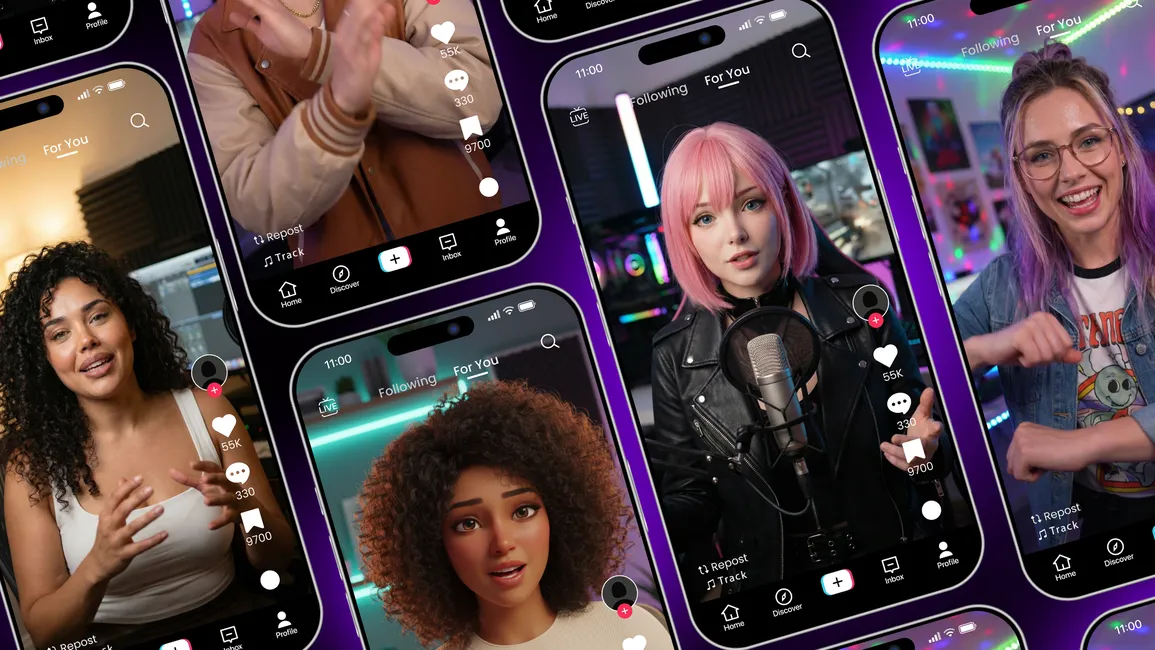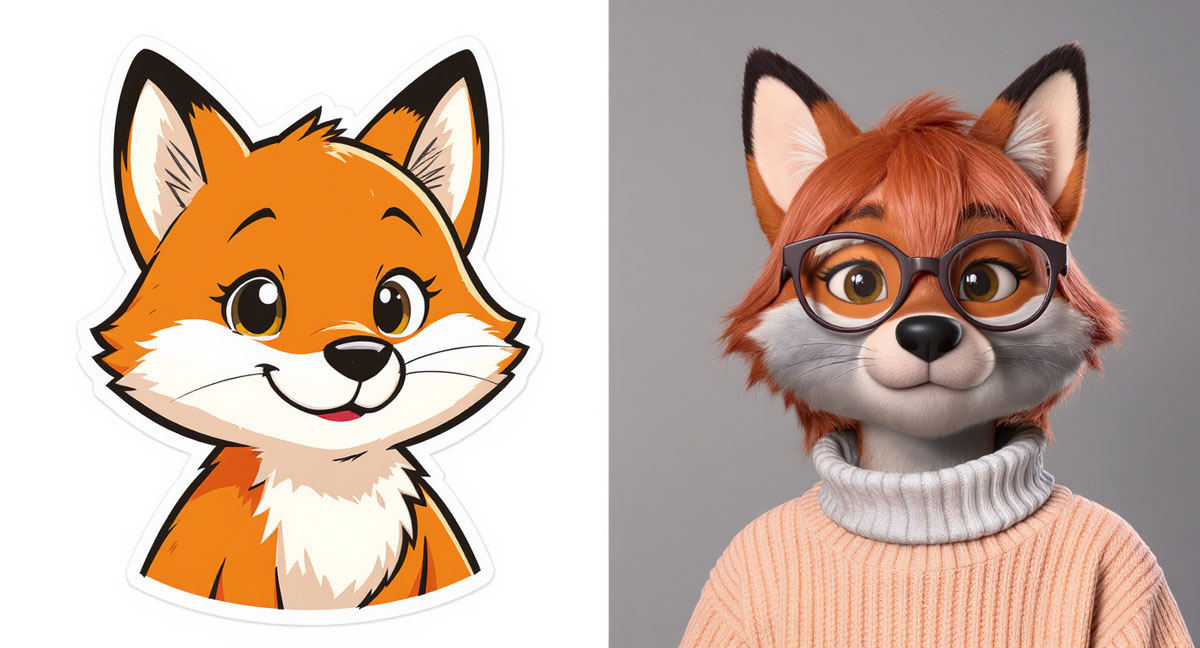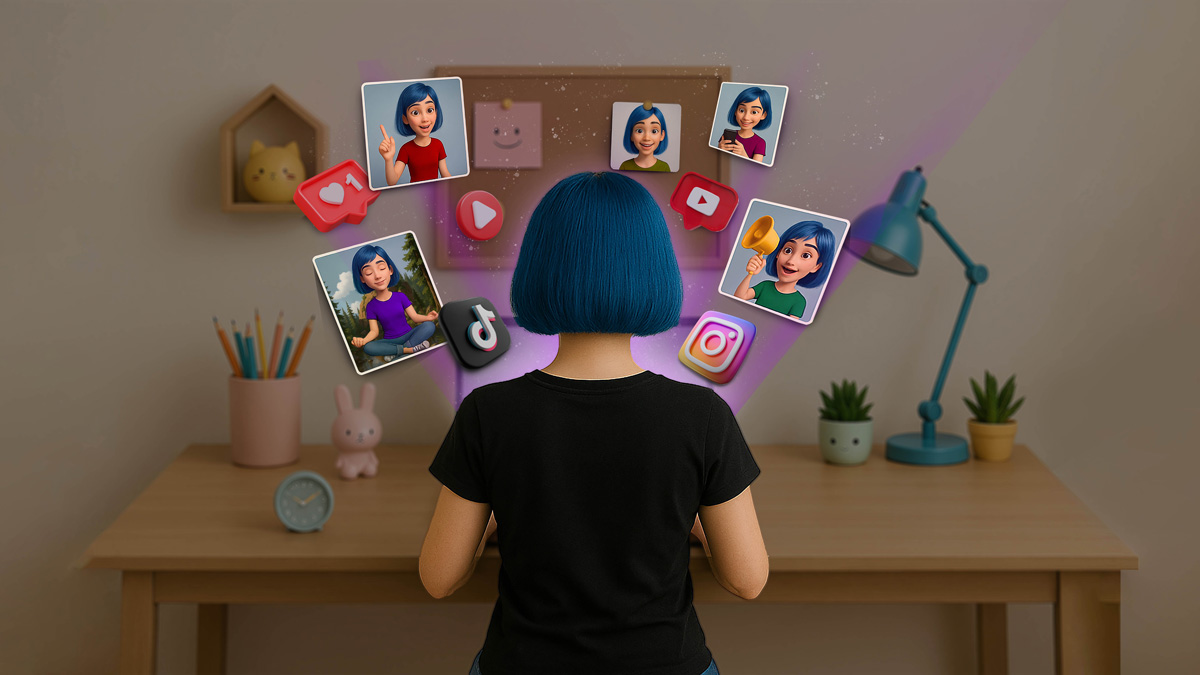
How much did you spend on your last influencer marketing campaign?
Did you get your money’s worth? Did it actually blow up like you hoped?
Now, picture this: what if you could create your own influencers from scratch—digital personalities that crank out viral content, fuel your marketing moves, and even chat with your customers—all without worrying about contracts, packed schedules, or PR disasters popping up out of nowhere?
Imagine the money you’d save and the freedom you’d have creatively.
Even if you’re not running a brand or a marketing team, launching a virtual influencer can be an awesome, profitable side hustle in today’s digital world.
Coming up, we’re diving into what it actually costs to set up Virtual Influencers, and why these digital personas give you a budget-friendly, scalable, and fresh way to promote your brand.
Let’s break down what you’re looking at, cost and benefit-wise, both in the short run and the long haul.
Understanding the Cost of Virtual Influencer
If you’re checking out this article, chances are you’ve dealt with the headaches of traditional influencer marketing—like endless scheduling hassles, messy contract negotiations, limited creative freedom, and even those dreaded PR meltdowns when things go sideways.
You might be hoping that virtual influencers can offer an easier, cost-efficient solution—and you’re not alone.
For brands new to virtual influencers, the costs can be confusing.
If you’re new to the virtual influencer game, figuring out costs can feel tricky. With human influencers, it’s usually straightforward: you’re paying for their followers and engagement. But with virtual influencers, you’re covering things like designing the character, constantly producing fresh content, and running the AI that powers them.
Let’s break down these costs and take a closer look at each one.
Initial Creation and Setup Costs of Virtual Influencers
Launching a virtual influencer does take some upfront cash. It’s not just about creating a slick-looking digital character—it’s also about crafting their personality, background, and vibe so they truly click with their audience. That means you’ll need talented 3D artists, animators, AI tech, and storytellers in your corner.

First, you’ll shape your influencer’s personality and backstory:
- How do they talk?
- What are their go-to topics?
- What’s their style—casual, flashy, or somewhere in between?
These questions—and plenty more—need clear answers to make your virtual character believable and engaging.
Then there’s the storyline.
- What’s their past all about?
- What adventures are they tackling now, and what’s next on the horizon?
Getting these storytelling elements right is key to bringing your virtual influencer to life. Learn how to strategically collaborate with virtual influencers to align storytelling with brand goals.
Once you’ve got that sorted, it’s time to dive into the fun stuff—actually designing and modeling your influencer with CGI and 3D animation tools. You’ll be rigging them up for lifelike movement and expressions, making your digital star feel truly alive.
Depending on how detailed and realistic you go, creating a high-quality virtual influencer can cost you tens, even hundreds of thousands of dollars.
Here’s a quick breakdown of the main expenses:
- Character and Story Development
- Design (Concept, CGI & 3D Modeling)
- Animation
- AI Interaction Setup
- Marketing and Promotion Strategy
Sounds steep, huh?
But don’t stress—there are always budget-friendly options, especially with some help from AI to streamline design and animation. Still, you can’t skimp on creative storytelling and character development—that’s gotta come from talented humans.
After all, the difference between a breakout star and a forgettable virtual influencer usually comes down to having a killer story and a strong character profile.
Bottom line: if you want your virtual influencer to crush it in the digital world (and score plenty of likes), you’ll need a solid, personality-driven plan right from the start—one that syncs perfectly with their unique traits, your target audience, and, of course, your budget.
Ongoing Costs of Virtual Influencers
So, you’ve got your virtual influencer up and running—awesome! But keeping them alive online means constantly feeding them fresh content. That includes coming up with cool ideas, writing scripts, creating videos, managing socials, and maybe even dropping in voiceovers here and there. Sure, AI can help you out with some tasks, but without a real human behind the scenes, your virtual star might start sounding like an automated customer support bot—and trust me, nobody wants that.
Also, remember that your virtual influencer needs to stay plugged into whatever’s trending. That means staying up-to-date with memes, viral challenges, and whatever else the internet is obsessing over this week.

Here’s a quick rundown of what you’ll be paying for regularly:
- Scriptwriting and content creation
- Visual updates and new designs
- Voiceovers or voice synthesis
- Social media management
- AI tools and software subscriptions
The total cost really depends on how active you want your influencer to be. More frequent posts, videos, and audience interactions can boost your engagement big-time—but they’ll also mean you’ll need a slightly bigger budget.
Marketing Costs
Just like real-life influencers, virtual stars need a marketing push too—especially in those early days when you’re aiming to quickly rack up followers and get noticed.
Promoting your digital influencer can happen across tons of channels: paid social media ads, banners on popular websites, YouTube shout-outs, or teaming up with other creators to reach new audiences.
But here’s the good news: If your virtual influencer is churning out content that’s super engaging and shareable, you can cut down these marketing costs significantly. Viral-worthy posts mean more likes, more shares, and better algorithm love—boosting your organic reach without emptying your wallet.
Technology and Maintenance Costs
Keeping a virtual influencer up and running isn’t a set-it-and-forget-it deal. It’s like owning a high-maintenance pet – except this one needs software updates and the occasional AI upgrade instead of food and belly rubs.
And don’t forget, virtual influencers don’t come with the same “scandals and drama” risk as real ones – but they still need to stay trendy and relevant, which means regular updates and tweaks to keep up with the latest internet obsessions.
Factors Influencing Virtual Influencer Creation Cost
There’s no flat rate when it comes to building a virtual influencer. It’s not like hiring a regular influencer with a set price based on followers. Here, your cost depends on how detailed, smart, and active you want your digital character to be. Let’s break down what drives the price up or keeps it down:
1. Design Complexity and Character Realism
The more lifelike your virtual influencer is, the more you’ll need to spend. Super realistic faces, smooth skin textures, perfect lighting—it all takes skilled artists and powerful tools. Characters like Lil Miquela cost a lot for a reason—they’re built to look real and connect with people on a deeper level.
But hey, a more stylized or cartoon-style character can still work great for the right brand—and it won’t cost as much.
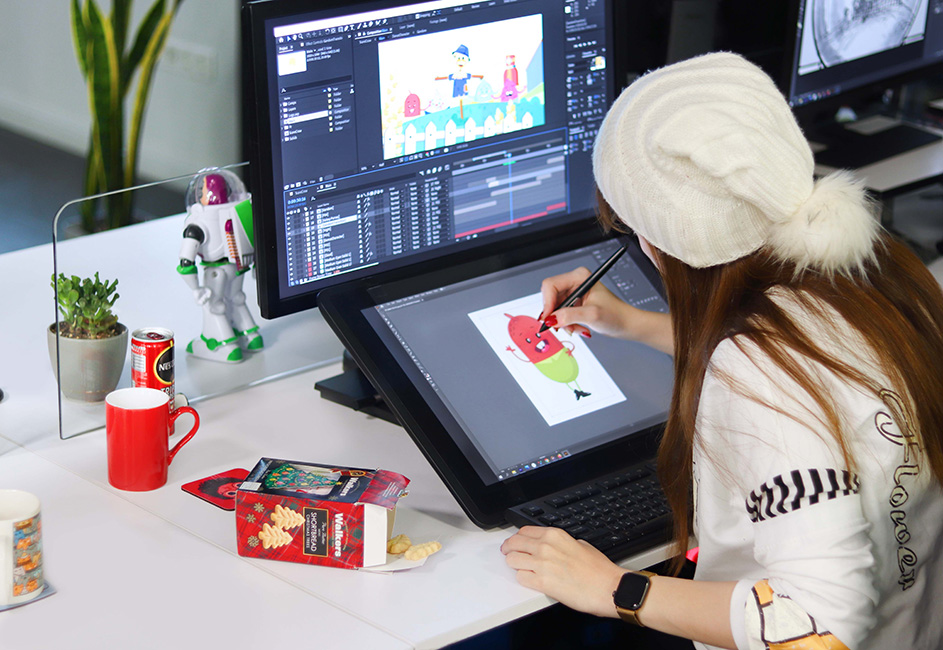
Quick tip: AI-powered image and video generators can help save some cash here!
2. Animation and Motion Capture Technology
Bringing a character to life means getting their movements right. If you want them to move like a real person—walk, talk, smile, gesture—you’ll need motion capture, which means recording a human and applying those moves to your character. That adds to the cost.
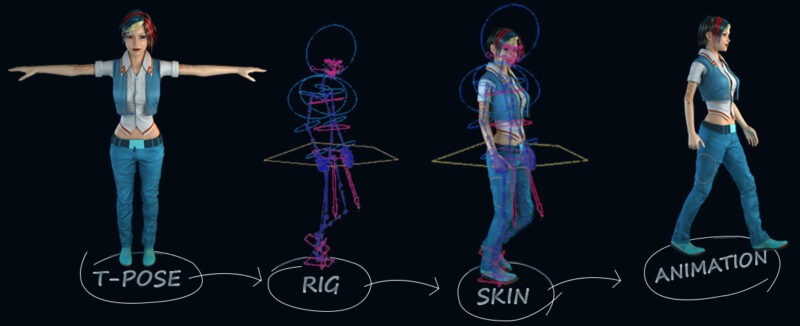
Want to save money? Go with simpler movements. Just know it might feel a bit stiff or robotic, so it really depends on how much energy you want your influencer to have.
At Dream Farm Agency, we mix AI and our own studio setup to craft awesome virtual influencers without breaking the bank.
3. AI Integration and Interactivity
If you want your influencer to reply to comments, answer DMs, or act like they’ve got a brain—yeah, that costs more. Setting that stuff up isn’t magic—it takes work, tools, and people who know what they’re doing.
Still, it can be worth it. A smart virtual influencer gets people talking, and that’s how you build a following. Just remember: they’ll need regular updates to stay sharp.
4. Content Production and Frequency
Want your influencer to post every day? Run stories, reels, videos, tweets, TikToks? All of that needs writers, editors, voiceovers, and someone to manage the accounts. The more content you put out, the higher the bill.
And if you’re posting in different languages or aiming at different countries, you’ll need to budget for that too.
5. Platform and Marketing Strategy
Where and how you launch your virtual influencer matters. Are you dropping your influencer into Instagram and TikTok? Or building them into the metaverse, AR, or some cool VR experience? The more advanced the platform, the more it’s gonna cost. And don’t forget about promo—ads, collabs, and boosts are all part of the game.
Virtual influencers don’t age or get canceled, but they do need regular care. From software updates to keeping their style fresh, you’ll need to keep them polished and on-brand. That means ongoing work behind the scenes—design tweaks, story updates, maybe even a new outfit now and then.
Don’t forget about legal stuff—IP management, rights protection, updates, and tech maintenance all come at a cost. Unlike human influencers who naturally evolve their brand, virtual influencers need continuous tweaking and brand-appropriate upgrades to stay fresh and relevant.
How Virtual Influencer Compares to Traditional Influencer Marketing
When you’re comparing the cost of virtual influencers to what you’d spend on traditional influencer marketing, you’ve gotta look at how the money works in each case. They play two very different games.
Let’s start with this: building a virtual influencer is an investment.
It takes time, skill, and some serious upfront spending—think 3D modeling, animation, AI features, and ongoing content creation. Yeah, it might cost anywhere from tens of thousands to even more, but here’s the thing: you’re not just paying for one campaign. You’re building a full-time digital ambassador that works for you non-stop.
No hourly rates. No posting fees. No mood swings.
Once they’re created, they’re yours—ready to show up in campaigns, social posts, product launches, whatever you’ve got planned. You control the story, the look, the tone—everything.
Now compare that to working with real influencers.
Traditional influencer marketing is kinda like renting. You pay per post, per story, or per video—and those fees can jump all over the place depending on their follower count, engagement, or just how “in demand” they feel that month. And let’s be real—negotiating contracts, scheduling shoots, and hoping they actually deliver the result you want? That’s the whole thing.
And here’s the wild card: people are unpredictable.
Real influencers can disappear, change their image overnight, or suddenly get caught up in drama that has nothing to do with your brand—but still reflects on it. That’s a risk you’re always running.
With a virtual influencer, you cut all that out.
You can even build more than one. Imagine having a whole squad of virtual reps, each one designed for a different product, audience, or campaign. No ego, no burnout, no schedule clashes—just focused storytelling.
So yeah, creating your own influencer might sound like a big move.
But it’s a smart one.
You’re building something that’s completely yours—and that kind of control, consistency, and creativity is hard to put a price on.
Risk Management and Brand Control
You own them. End of story. No surprise fees. No sudden “creative differences.” No scandals blowing up your brand overnight.
With virtual influencers, you’re in full control—how they speak, what they wear, what they stand for. That kind of consistency means way less risk and way more peace of mind. You don’t have to worry about damage control or scrambling to fix a campaign gone sideways.
But with traditional influencers? Different story. They’re human—things happen. One wrong tweet, a messy headline, or even just a shift in public opinion can throw your whole campaign off-track. And when that happens, it’s not just stressful—it’s expensive. We’re talking emergency PR, pulled content, wasted ad spend… not fun.
So while a virtual influencer might cost more up front, the long-term payoff in control, safety, and brand trust? Totally worth it.
Conclusion
So, Which One’s More Cost-Effective?
Honestly? It depends on what you’re after.
If your brand wants long-term value, full control, and a marketing asset that doesn’t flake, stir up drama, or charge more every time you need a post—virtual influencers are the move. Yeah, they take more upfront cash to build, but once they’re live, they’re consistent, scalable, and way less risky.
With the right strategy, a virtual influencer doesn’t just pay for itself—they can actually become a money-making machine. We’re talking product sales, brand deals, sponsorships, and even merch or licensing. That’s how you turn a marketing tool into a full-on business asset.
Now, traditional influencer marketing still has its place. It’s flexible, fast, and taps into real-world personalities with real followers. But it also comes with price swings, schedule changes, and the occasional PR nightmare that can wreck your budget.
Knowing the trade-offs helps you decide where to put your money—and how to get the most out of it in today’s digital world.
Now that you understand the costs involved, the next step is to build a successful campaign. To learn how to manage your investment and turn it into a profitable asset, explore the complete guide to virtual influencer marketing.
Ready to see how it works in real life?
Check out our virtual influencer creation service page and see the characters we’ve created for brands across different industries.
Why Work With Dream Farm?
- We’re pros in high-end CGI and smart AI tools
- We build characters that actually fit your brand
- We keep it cost-effective and easy to scale
- And we’ve got the track record to prove it
Let’s create your next digital superstar.
Hit us up at Dream Farm Agency—and let’s bring your virtual influencer to life.
Kiarash
